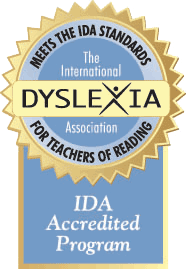Orton-Gillingham Lesson Basics: Multisensory Introduction
Posted by Brainspring on 3rd Apr 2019
Welcome to the next post in our series on Orton-Gillingham lesson plan basics! We recently posted on the Vowel Intensive activity and the Three-Part Drill, including the visual, auditory and blending components. In case you missed our latest article on the Vowel Intensive activity, click HERE!
This weeks’ Orton-Gillingham Lesson Basics covers the next lesson component, the multisensory introduction of a skill. While reading this article, think about how beneficial multisensory teaching is for all learners. It’s not only effective … it’s fun too!
What is the Purpose of a Multisensory Activity?
Multisensory teaching engages multiple learning pathways, which is beneficial for all readers, yet critical for struggling readers. When a new skill is introduced using a multisensory approach, it is introduced in a way which simultaneously links visual, auditory, tactile and kinesthetic pathways. The more senses involved, the more likely students retain and recall the information after practice and repetition. According to the National Reading Panel, about 40% of students require phonics-based reading instruction, where skills are taught explicitly, using multisensory approaches.
Many of us have a lesson or activity we vividly remember from when we were young. Maybe it was a hands-on science lesson, a math song to help remember a tricky formula, or a librarian acting out a historical character. You probably remember this lesson or activity because it was taught to you using a multisensory approach. In the math song example, singing the formula in addition to writing it with pencil and paper was involved. Singing fired up the auditory system and therefore another area of the brain.
Teachers and parents may not even recognize they are teaching using multisensory strategies! They are naturally more engaging, interactive and, to put it simply … fun.
What Does Introducing a Skill Look Like?
When a new skill is introduced, students practice saying a sound or applying a rule (spelling rule, etc). The students then partake in an activity that fully engages them in the sound and symbol, or spelling rule. If a spelling rule is being introduced, each step is explicitly outlined and practiced.
Make it Multisensory
Below is one example of a multisensory way to introduce the concept of Magic-E or Silent-E. This is a good example to demonstrate because it explicitly teaches the concept while engaging multiple senses.
Silent-E is sort of like a ninja. It’s sneaky in that it remains at the end of a word yet is never heard. It just sits there, glaring at the previous vowel and making it say its name. Ninja-e, however, does have a weakness. It can only hop back over one consonant to make the previous vowel say its name.
Students can build a Ninja-E with pipe cleaners and attach on the top of their pencil to practice applying the Silent-E during dictation. After writing a word, they can have Ninja-E glare at the previous vowel and tell you what sound the vowel now makes.
They can also illustrate their own Ninja-E card, cut out CVC word cards, and teach a partner the rule.
Other multisensory examples include illustrations, mnemonic devices, games, and tactile crafts. For more ideas, check out our Multisensory Monday articles featured on our Orton-Gillingham Weekly, or, visit our Pinterest page by clicking HERE!
Written by Brainspring





